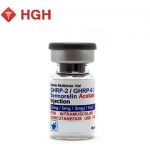 Testosterone is attributed as the male sex hormone but is also found in females. In testosterone deficient males, a blood test is the best way to determining the concentration of this hormone before administering the replacement therapy.
Testosterone is attributed as the male sex hormone but is also found in females. In testosterone deficient males, a blood test is the best way to determining the concentration of this hormone before administering the replacement therapy.
There are two types of tests for testosterone that will enable the doctor to realize the level of deficiency. The first test shows a measure of total testosterone while the other one calculates free testosterone.
Testing for testosterone
The first thing required is the blood sample of the patient and you can prepare for it in advance by not taking any medications because this can hamper with the test results.
Why perform this test
This test becomes imperative when a male has been partially diagnosed with abnormal hormone secretion. When the hormone is secreted in males, it is released in the blood. Hence, optimum levels of testosterone are maintained in blood. The test confirms the levels of testosterone in blood and the results are used to establish the condition which helps:
- Adult men so that they can know the reason of low sex drive, thinning of bones and impotence
- Boys in the puberty
On the contrary, the levels of testosterone are tested in females for totally different reasons. This test is performed in females when the following signs of increase testosterone are identified.
- Irregularity or complete absence of menstrual cycles
- Stunted breasts
- Increased facial hair
- Hair thinning or head baldness similar to males
What the results have to say
In order to get tested, you should first know the normal levels of testosterone
- In males, the normal range is 300 – 1,000 ng/deciliter
- In females, the normal range is 15 – 70 ng/deciliter
Your testosterone levels will be compared against these normal ranges. But it must be noted that the normal values may slightly differ according to the various laboratory standard. Moreover, some labs use different test specimens and this might show conflicting results. Your doctor can brief you about which specimen to use. Anyhow, if the results of the test are not according to expectations, then testosterone therapy can always step forward to the rescue. However, the user must be aware of the excess or decline of testosterone levels.
Higher testosterone levels
- Premature onset of puberty
- Caner in the testes or ovaries
- Androgen resistance
Low T results
- Delayed onset of puberty
- Pituitary gland fails to produce some or all of its hormones
- Shrinkage of testicles
Potent risks
There are some far-fetched risks of this test but the possibility cannot be completely over-looked. In some patients, it is difficult to draw blood and this might cause hindrance in collecting samples. Excessive bleeding, hematoma and infection may also follow.




